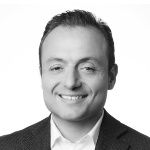Adaptive structures have been part of the research portfolio of the ILEK for more than two decades. Thanks to a number of internationally successful projects, such as the so-called Stuttgarter Träger from 2001 or the Stuttgart SmartShell from 2014 through to the Collaborative Research Center 1244 "Adaptive Skins and Structures for the Built Environment of Tomorrow", the ILEK is one of the world's leading research institutions for adaptive constructions.
Due to a growing world population and a corresponding increase in resource consumption, the construction industry, which is one of the principal consumer of resources, can no longer avoid its social responsibility.
Adaptivity can play a key role in the construction industry in addressing this challenge. With this technology, the limits of lightweight construction are clearly exceeded, because the use of adaptive elements allows components to be built with up to 70% less material than what would be the case for a passive component. This is made possible by an intelligent interaction of actuators, sensors and control units, which enables adaptive structures to react actively to external influences. Rare and extremely high loads can be counteracted by this technology and thus additional material or building mass, which would be necessary to cope with these loads in the passive case, can be saved.
The broad range of research subjects at the ILEK include among others, adaptive load-bearing structures in high-rise buildings, adaptive shells or adaptive slabs. These topics are investigated within the SFB 1244 and in interdisciplinary cooperations with other institutes. How and in which number the different actuators are integrated into the supporting structures is an important research aspect. While for beam structures mainly linear actuators are used, which are either placed in series or parallel to the supporting structure, hydraulically activated hollow bodies can be implemented in concrete components and thus reduce undesired deformations, stresses and vibrations. The research is done with numerical simulations as well as with experiments. Functional models and demonstrators are built and tested in different scales. From laboratory scale to 1:1 scale, they verify the theoretical research results and provide proof of resource savings.
Current Research Projects:
Collaborative Research Centre 1244: Adaptive skins and structures for the built environment of tomorrow
Since January 2017, fourteen institutes at the University of Stuttgart have been working in close interdisciplinary collaboration on the question of how, in light of the growing world population and depleting resources, more living space can be created with less material in the future. The objective of CRC 1244 is therefore to find answers to the pressing ecological and social questions of our time for the construction industry. The aim is to optimise the energy, material and emission balance of the load-bearing structure as well as the façade throughout the entire life cycle of the building through adaptivity.
Prof. Werner Sobek (formerly head of the Institute of Lightweight Design and Construction), as initiator, led the CRC 1244 as spokesperson until the end of 2020. Since January 2021, Prof. Oliver Sawodny (currently head of the Institute of System Dynamics) has assumed the role of spokesperson.

Walter Haase
Dr.-Ing.Head of the working group "Lightweight Design and Adaptive Facades", Managing Director Collaborative Research Center 1244
[Image: ILEK]

Gennaro Senatore
Dr.-Ing.Head of the working group "Adaptive Structures"



